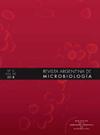2016 - 2022年厄瓜多尔产碳青霉烯酶肠杆菌mcr-1介导的粘菌素耐药流行病学
IF 2.1
4区 生物学
Q4 MICROBIOLOGY
引用次数: 0
摘要
产碳青霉烯酶肠杆菌(CPE)在过去十年中有所增加。在低收入国家,粘菌素被认为是治疗CPE感染的最后一种抗菌素,其最令人担忧的耐药机制是MCR-1的产生。本研究旨在通过对厄瓜多尔CPE分离株mcr-1基因的监测,了解该地区CPE中粘菌素耐药性的流行病学。从2016年到2022年,共收集了361株CPE分离株。采用肉汤微量稀释法测定粘菌素耐药性,并对最常见的碳青霉烯酶编码基因和mcr-1基因进行了研究。研究期间粘菌素耐药率由3.76%上升至23.74%。在研究的所有分离株中未发现mcr-1基因,肺炎克雷伯菌blakpc是最常见的微生物(n=322;89.20%)。结论:厄瓜多尔CPE患者粘菌素耐药增加,与mcr-1基因无关。我们的研究结果突出表明,有必要在“同一个卫生方针”下密切监测国家抗菌素耐药性政策。本文章由计算机程序翻译,如有差异,请以英文原文为准。

Epidemiology of colistin resistance mediated by mcr-1 in carbapenemase-producing Enterobacterales in Ecuador in three periods from 2016 to 2022
Carbapenemase-producing Enterobacterales (CPE) have increased in the last decade. In low-income countries, colistin is considered a last resort antimicrobial to treat CPE infections, whose most worrisome mechanism of resistance is MCR-1 production. This study aims to understand the epidemiology of colistin resistance in CPE in the region, through the surveillance of the mcr-1 gene in CPE isolates in Ecuador. A total of 361 CPE isolates were collected across three periods, from 2016 to 2022. Colistin resistance was assessed using the broth microdilution method and the most frequent carbapenemase-encoding genes and the mcr-1 gene were studied. Colistin resistance rate increased from 3.76% to 23.74% during the study period. The mcr-1 gene was not identified in any of the isolates studied and Klebsiella pneumoniae blaKPC was the most prevalent microorganism (n = 322; 89.20%). In conclusion, colistin resistance increased in CPE in Ecuador and was not mediated by the mcr-1 gene. Our results highlight the need to closely monitor national politics on antimicrobial resistance under the One Health Approach.
求助全文
通过发布文献求助,成功后即可免费获取论文全文。
去求助
来源期刊

Revista Argentina de microbiologia
MICROBIOLOGY-
CiteScore
3.30
自引率
0.00%
发文量
46
审稿时长
>12 weeks
期刊介绍:
La Revista Argentina de Microbiología es una publicación trimestral editada por la Asociación Argentina de Microbiología y destinada a la difusión de trabajos científicos en las distintas áreas de la Microbiología. La Asociación Argentina de Microbiología se reserva los derechos de propiedad y reproducción del material aceptado y publicado.
 求助内容:
求助内容: 应助结果提醒方式:
应助结果提醒方式:


